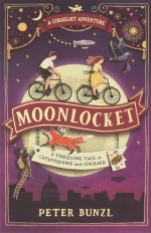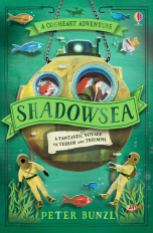Many years ago, in 2009, I was lucky enough to go to a talk by Axel Scheffler about his career as an illustrator of children’s picture books, run by the Society of Authors. The meeting was chaired by Ros Asquith.

Axel is one of my favourite all time illustrators. He won his first drawing prize around the age of eight. It was for a picture of a cow. He is originally from Hamburg but, studied at Bath Academy of Art where he got a first class degree.
He told us, the greatest thing about going to art school was having the freedom to draw for three hours and the qualifications opened doors for employment. He has no time to do observational drawings anymore. He has got out of the habit and has been unable to get back into it. Looking and remembering is a skill some people can not do. Picasso and many other artists all used photos. But, Axel claims it is a skill you can train yourself to do. It makes you look more carefully at things. His style he developed himself. But, he is a perfectionist and is not happy with his work on occasions. He divulged how he finds it difficult to draw a succession of events and prefers to tell a story all in one picture.
He showed his portfolio in the mid-80’s to magazines and got regular work for a magazine called Lotus. He would draw anything and would change his drawings when asked. Sometimes he found himself drawing things he did not really understand. He also worked for a German magazine called Zeitmagazin where he did weekly illustrations and illustrated a column for a food writer.
He has also written and illustrated some Pixi Books (or Pixi Bücher) for their 40th Anniversary. He was one of 10 illustrators asked to commemorate the event. They have published over 1,500 identically sized titles, 10x10cm, which are all grouped and numbered in little series with German precision. He likes to do things that are less main stream, but he has less time nowadays. He enjoys illustrating with little pictures on a white background. He still does some work for The Oldie. He thinks as an illustrator he is more popular in Germany than in the UK.
He showed us how when you look at his illustrations over the years you can see his progression from pointy nose characters to softer styles.
The Piemakers by Helen Cresswell was the first book he ever illustrated
Daley B by Jon Blake was the first book he illustrated for Walker Books
Sam: Who Was Swallowed by a Shark by Phyllis Root was the second book he illustrated for Walker Books
In 1994, Julia Donaldson was writing songs for Playdays and Axel Scheffler was recommended as the illustrator. He worked on A Squash and a Squeeze. This was his first book with Macmillan. The next book he did with Julia was The Gruffalo, followed by Room on the Broom, Tiddler and The Stick Man, which was nominated for The Roald Dahl Funny book Prize. These books have been translated into 29 languages.
Publishers often do not have the patience to develop illustrators and authors. But, he has worked with Macmillan a long time now and they have moulded him into what they want. There are many people involved in the publication of a picture book. The final product is very influenced by the editor and art director.
The Gruffalo
Usually when he has an idea he ends up sticking with it. But with The Gruffalo cover his original just had a shadow of The Gruffalo, but the editor wanted the main protagonist on the cover so he redrew it. However, in the US they did not want the main protagonist on the cover so he had to draw another one where he hid The Gruffalo partially behind a shrub. This only appeared on the US first edition, the second edition adopted the UK design.
He explained how he had a terrible time getting the skies right because he found it difficult to get the liquid watercolours to do what he wanted. He usually starts his illustrations with liquid watercolours (like ink) drawings a lot smaller than in the book and they get blown up to the right size, which he then works with. He dips a pen into the ink and then colours them with special coloured pencils. He used to do his picture book drawings the same size but, now he does them 90%. He always starts with ink outlines and then colours on top of the inks and rubs in the colours with his fingers. At the end he reinforces the outline with the ink and adds details, such as lines for fur and leaves. Nowadays he is able to ask the publishers to make small alterations in Photoshop but, previously he was only able to change it by hand and then email the new version.
The Smartest Giant in Town
For this book he also drew a totally different front cover, but they wanted something more friendly so he had to rethink.
Rabbit’s Nap (Tales from Acorn Wood)
This is a lift the flap book and Axel loved drawing the little dressed animals
The Gruffalo Song and Other Songs
This was not the first cover design again, as he decided he did not want to metamorphosis the animals. This book is also available as a musical audio CD.
Axel’s advice to aspiring illustrators is to practice hard. He kept a sketch book from the age of about 18 before he started at art college. There is a whole playground of ideas in these sketch books that he has jotted down. Sometimes the sketch books relate to books he is working on. Axel explained how it is nice to look at old sketch books as they bring back memories. But, it is the unpredictability of the whole business that is so lovely about it.
























